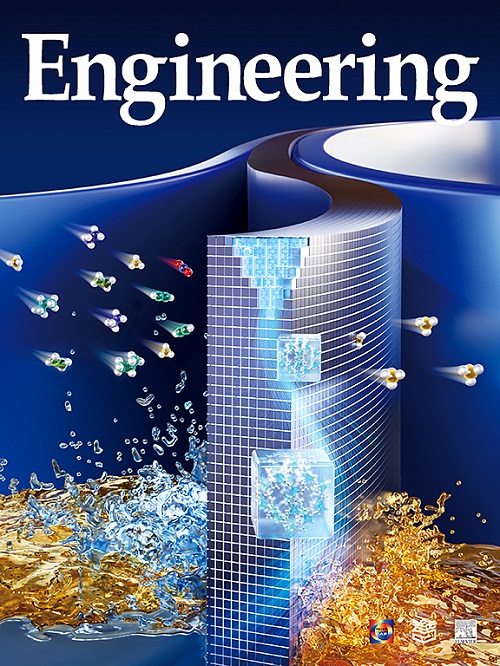Highly Efficient and Precise Rare-Earth Elements Separation and Recycling Process in Molten Salt
IF 10.1
1区 工程技术
Q1 ENGINEERING, MULTIDISCIPLINARY
引用次数: 0
Abstract
Owing to the worldwide trend towards carbon neutrality, the number of Dy-containing heat-resistant Nd magnets used for wind power generation and electric vehicles is expected to increase exponentially. However, rare earth (RE) elements (especially Dy) are unevenly distributed globally. Therefore, an environmental-friendly recycling method for RE elements with a highly precise separation of Dy and Nd from end-of-life magnets is required to realize a carbon-neutral society. As an alternative to traditional hydrometallurgical RE separation techniques with a high environmental load, we designed a novel, highly efficient, and precise process for the separation and recycling of RE elements from magnet scrap. As a result, over 90% of the RE elements were efficiently extracted from the magnets using MgCl2 and evaporation loss was selectively suppressed by adding CaF2. The extracted RE elements were electrolytically separated based on the formation potential differences of the RE alloys. Nd and Dy metals with purities greater than 90% were estimated to be recovered at rates of 96% and 91%, respectively. Almost all the RE in the scraps could be separated and recycled as RE metals, and the byproducts were easily removed. Thus, this process is expected to be used on an industrial scale to realize a carbon-neutral society.
求助全文
约1分钟内获得全文
求助全文
来源期刊

Engineering
Environmental Science-Environmental Engineering
自引率
1.60%
发文量
335
审稿时长
35 days
期刊介绍:
Engineering, an international open-access journal initiated by the Chinese Academy of Engineering (CAE) in 2015, serves as a distinguished platform for disseminating cutting-edge advancements in engineering R&D, sharing major research outputs, and highlighting key achievements worldwide. The journal's objectives encompass reporting progress in engineering science, fostering discussions on hot topics, addressing areas of interest, challenges, and prospects in engineering development, while considering human and environmental well-being and ethics in engineering. It aims to inspire breakthroughs and innovations with profound economic and social significance, propelling them to advanced international standards and transforming them into a new productive force. Ultimately, this endeavor seeks to bring about positive changes globally, benefit humanity, and shape a new future.
 求助内容:
求助内容: 应助结果提醒方式:
应助结果提醒方式:


